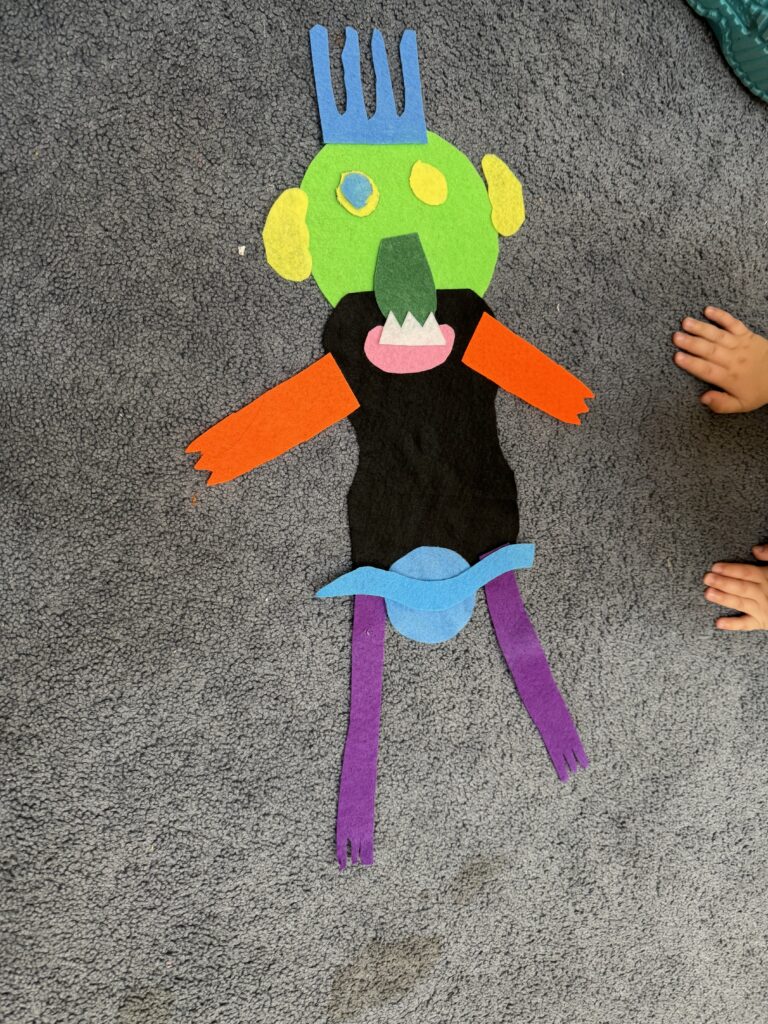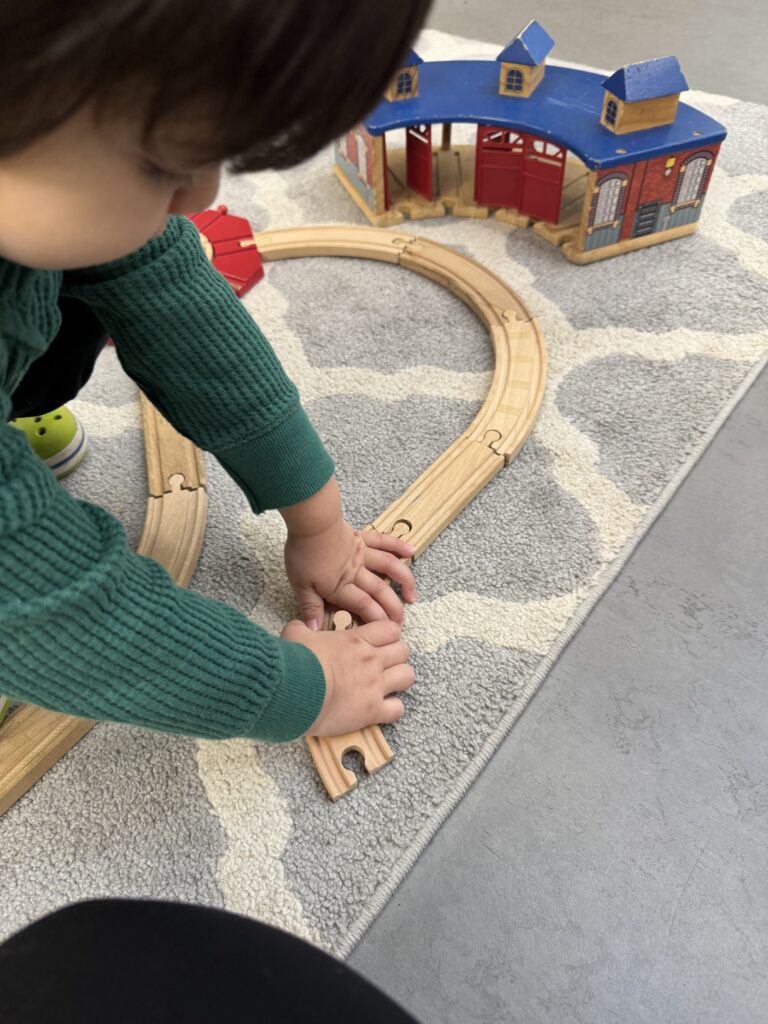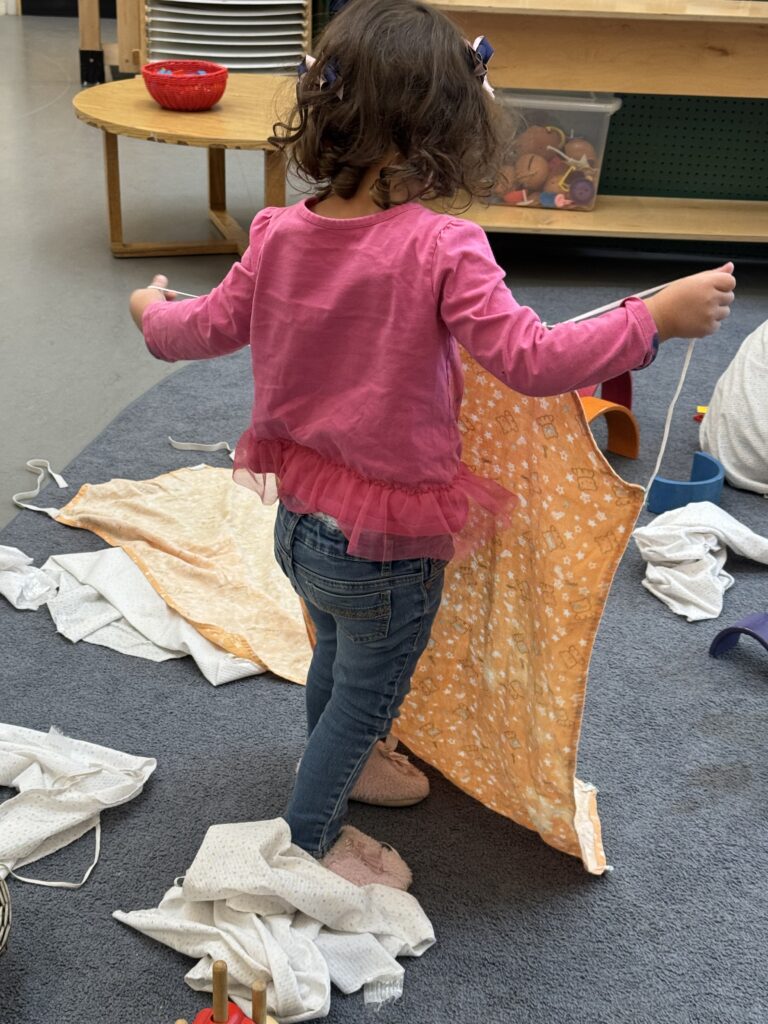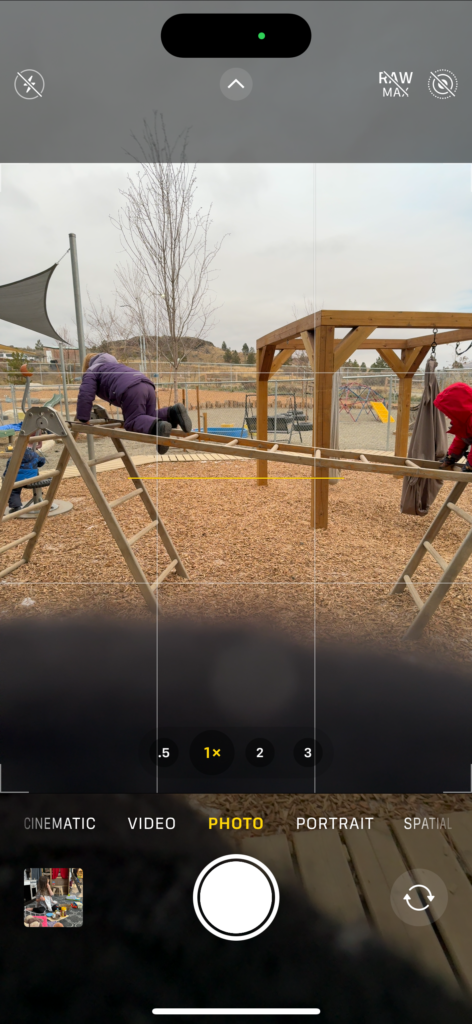Starting my practicum at Cariboo was a mix of excitement and nervousness. I was looking forward to building connections with the children, gaining valuable experience, and learning new things. As I spent time in the outdoor play program, which focuses on wild play, I learned so much and developed my skills. At first, I was surprised and even a bit scared seeing the children climb trees and run down hills, as it felt a bit risky. However, over time, my initial discomfort transformed into appreciation. I began to see the children not as needing constant protection, but as capable, independent beings who thrive in such environments. This shift in perspective was profound, and I now understand the importance of allowing children the freedom to explore and challenge themselves. This experience has enriched my learning and will certainly influence both my future studies and my life.
Conversations and Connections with Children
“Exploring Life’s Big Questions: Wyne’s Journey Through Play and Imagination”
Wyne and I were outside, exploring the gadgets set out for the children to play with—a toy phone, keyboard, and camera. Wyne picked up the phone and said, “Let’s play phone phone!” She decided I would play the vet, and she would call me because her dog was sick.
She dialed an imaginary number and said, “Hello, my dog is sick and vomiting!” I suggested a few ideas to help her dog feel better, like giving him water or letting him rest. After some back-and-forth, Wyne paused, looked at me seriously, and said, “Maybe it’s time for my dog to die.”
I was caught off guard. For a moment, I didn’t know how to respond. Then I realized this might be connected to something real she was processing. I nodded and asked gently, “Do you want to find a place where we can put your dog to rest and say goodbye?”
Her eyes lit up. “Yes, yes, yes!” she said eagerly. We walked around together, looking for the perfect spot. When we found it, we crouched down and said goodbye to her dog. Wyne was quiet for a moment, and then she looked up at me and asked, “Now what?”
I hesitated. It was a big moment, and I didn’t want to brush past it. Finally, I said, “What if we get a cat now?” Her face brightened, and just like that, the sadness shifted into excitement. “Yes!” she exclaimed, clapping her hands. From there, the play took on a new direction as we imagined all the adventures we could have with her new cat.
what I learned:
Today, I learned how Wyne uses play to explore big, sometimes difficult ideas like death. Through our role-play, I saw how she processed her emotions in a safe and creative way, moving from sadness to hope with incredible resilience.
This experience taught me the importance of being present and open to sensitive topics during play. Next time, I want to be better prepared for moments like this—maybe by having a story about saying goodbye to pets or an art project ready to help children remember and celebrate the animals they love.
Through this role-play, I saw how Wyne expressed herself, reflected on her feelings, and imagined new possibilities. This kind of play builds empathy, emotional understanding, and problem-solving skills. I feel grateful to have shared this moment with her and to have supported her as she learned and grew.
“From Tech to Play: How Gadgets Spark Young Imaginations.”

Children explore real gadgets, pretending to be adults in their own office world. Using phones, keyboards, and cameras, they immerse themselves in imaginative role play, mimicking office tasks and work life with creativity and curiosity.
“Connecting Worlds with Train Tracks”
Noah and Sophie wanted to play with trains, while Luna was on the other end of the room playing with beads. Sophie wanted to play with both Noah and Luna, and then Noah had an idea. He suggested, “Why don’t we build the train tracks all the way to the other end where Luna is playing? That way, we’ll all be connected, and you can play with both me and Luna.” This creative solution allowed them to bridge their play and enjoy the fun together.
“Creating Our Monster: A Collaborative Imagination with Felt Pieces”

“Unleashing creativity: designs her own princess dress, exploring fabrics and textures along the way!”
Girls wanted to play as Princess Elsa, so we spent a lot of time together deciding on the perfect fabric and design for the princess dress. Each child carefully explored different textures and colors, sharing ideas and collaborating to create a dress that felt just right for their imaginative play. It was a wonderful moment of creativity, as they brought their vision of Elsa to life through their choices and teamwork.
“First Circle Time: Engaging with a Sensory Christmas Story”
I read a Christmas book for the first time during circle time, which was a special experience for me. The book was sensory-based, allowing the children to feel and touch different textures, and they absolutely loved it. It was a wonderful way to engage their senses while sharing the story, and I enjoyed seeing their excitement and curiosity as they interacted with the book.

Out door Play
“Overcoming Challenges: Gordon’s Journey to Mastering Stamp Cutters”
Gordon was initially disheartened as he watched his friends effortlessly use the stamp cutters, feeling left out. However, after several attempts and some encouragement, he finally figured it out and was overjoyed. We spent a lot of time exploring the stamps and cutters together, and Gordon’s excitement when he mastered them was truly heartwarming.
“Gabriella’s Journey of Self-Motivation and Perseverance”
Gabriella loves doing puzzles, and today she chose the hardest one, a puzzle she had never completed before. At first, she asked for help, and I told her, “I don’t know how to do it, but I’m here with you. We can figure this out together.” I watched as she struggled, determined to figure it out on her own. What stood out was how she kept motivating herself. With each piece, she cheered herself on with words like, “Go Gabriella, you can do it,” and “Just a few more.” Finally, after much effort, she completed the puzzle and was filled with happiness and pride. We celebrated her achievement with a little happy dance, and since that day, I’ve noticed that during her quiet time, Gabriella always picks up that same puzzle, eager to complete it again.
From this experience, I learned the power of self-motivation and perseverance in children. Gabriella’s ability to encourage herself, even when faced with a challenging task, showed me how important it is to support and nurture a child’s internal drive. It reminded me that with patience, persistence, and positive reinforcement, children can develop a strong sense of confidence and resilience, which will help them tackle challenges in the future.











